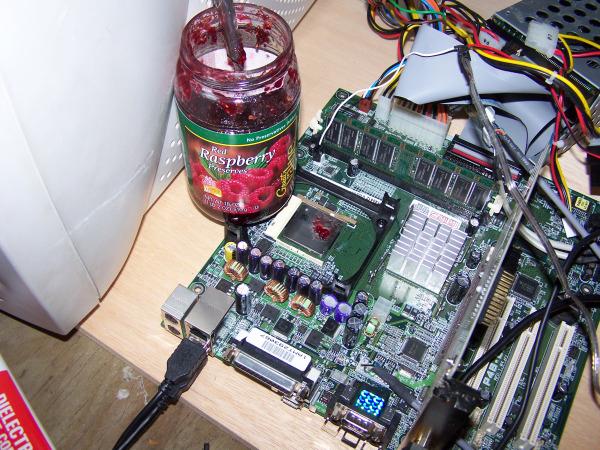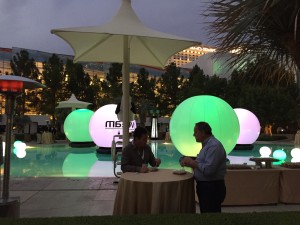Peanut Butter is Not Supported with vSphere/Storage Networking/vSAN/VCF
From time to time I get oddball questions where someone asks about how to do something that is not supported or a bad idea. I’ll often fire back a simple “No” and then we get into a discussion about why VMware does not have a KB for this specific corner case or situation. There are a host of reasons why this may or may not be documented but here is my monthly list of “No/That is a bad idea (TM)!”.
How do I use VMware Cloud Foundation (VCF) with a VSA/Virtual Machine that can not be vMotion’d to another host?
This one has come up quite a lot recently with some partners, and storage vendors who use VSA’s (A virtual machine that locally consumes storage to replicate it) incorrectly claiming this is supported. The issue is that SDDC Manager automates upgrade and patch management. In order to patch a host, all running virtual machines must be removed. This process is triggered when a host is placed into maintenance mode and DRS carefully vMotions VMs off of the host. If there is a virtual machine on the host that can not be powered off or moved, this will cause lifecycle to fail.
What about if I use the VSA’s external lifecycle management to patch ESXi?
The issue comes in, running multiple host patching systems is a “very bad idea” (TM). You’ll have issues with SDDC Manager not understanding the state of the hosts, but also coordination of non-ESXi elements (NSX perhaps using a VIB) would also be problematic. The only exception to using SDDC manager with external lifecycle tooling tools are select vendor LCM solutions that done customization and interop (Examples include VxRAIL Manager, the Redfish to HPE Synergy integration, and packaged VCF appliance solutions like UCP-RS and VxRACK SDDC). Note these solutions all use vSAN and avoid the VSA problem and have done the engineering work to make things play nice.
Should I use a Nexus 2000K (or other low performing network switch) with vSAN?
While vSAN does not currently have a switch HCL (Watch this space!) I have written some guidance specifically about FEXs on this personal blog. The reality is there are politics to getting a KB written saying “not to use something”, and it would require cooperation from the switch vendors. If anyone at Cisco wants to work with me on a joint KB saying “don’t use a FEX for vSAN/HCI in 2019” please reach out to me! Before anyone accuses me of not liking Cisco, I’ll say I’m a big fan of the C36180YC-R (ultra deep buffers RAWR!), and have seen some amazing performance out of this switch recently when paired with Intel Optane.
Beyond the FEX, I’ve written some neutral switch guidance on buffers on our official blog. I do plan to merge this into the vSAN Networking Guide this quarter.
I’d like to use RSPAN against the vDS and mirror all vSAN traffic, I’d like to run all vSAN traffic through a ASA Firewall or Palo Alto or IDS, Cisco ISR, I’d like to route vSAN traffic through a F5 or similar requests…
There’s a trend of security people wanting to inspect “all the things!”. There are a lot of misconceptions about vSAN routing or flowing or going places.
Good Ideas! – There is some false assumptions you can’t do the following. While they may add complexity or not be supported on VCF or VxRAIL in certain configurations, they certainly are just fine with vSAN from a feasibility standpoint.
- Routing storage traffic is just fine. Modern enterprise switches can route OSPF/Static routes etc at wire-speed just fine all in the ASIC offloads. vSAN is supported over layer 3 (may need to configure static routes!) and this is a “Good idea” on stretched clusters so spanning tree issues don’t crash both datacenters!
- vSAN over VxLAN/VTEP in hardware is supported.
- VSAN over VLAN backed port groups on NSX-T is supported.
Bad Ideas!
Frank Escaros-
- Trying to mirror high throughput flows of storage or vMotion from a VDS is likely to cause performance problems. While I”m not sure of a specific support statement,
i’m going to kindly ask you not to do this. If you want to know how much traffic is flowing andwhere, consider turning on SFLOW/JFLOW/NetFlow on the physical switches and monitoring from that point. vRNI can help quite a bit here! - Sending iSCSI/NFS/FCoE/vSAN storage traffic to an IDS/Firewall/Load balancer. These devices do not know how to inspect this traffic (trust me, they are not designed to look at SCSI or NVMe packets!) so you’ll get zero security value out of this process. If you are looking for virus binaries, your better off using NSX guest introspection and regular antivirus software. Because of the volume, you will hit the wire-speed limits of these devices. Outside of path latency, you will quickly introduce drops and re-transmits and murder storage traffic performance. Outside of some old Niche inline FC encryption blades (that I think Netapp used to make), inline storage security devices are a bad idea. While there are some carrier-grade routers that can push 40+ Gbps of encryption (MLXe’s I vaguely remember did this) the costs are going to be enormous, and you’ll likely be better off just encrypting at the
vSCSI layer using the VM Encryption VAIO filter. You’ll get better security that IPSEC/MACSEC without massive costs.
Did I get something wrong?
Is there an Exception?
Feel free to reach out and lets talk about why your environment is a snowflake from these general rules of things “not to do!”










